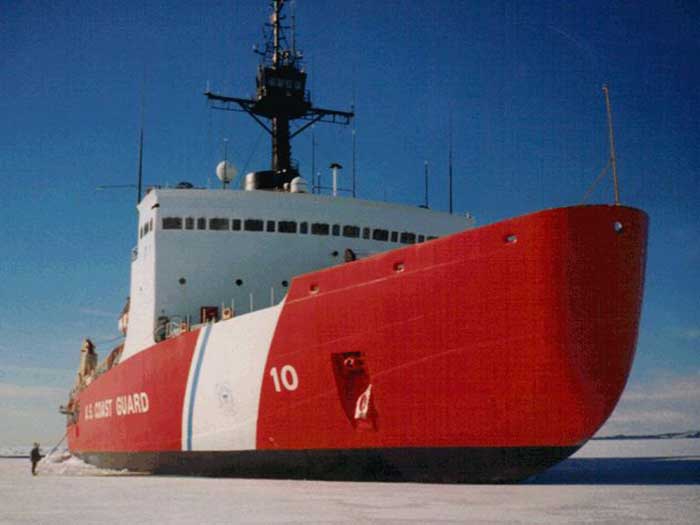
U.S. should block-buy four polar icebreakers at $791 million each
Written by Nick Blenkey
USCGC Polar Star (WAGB-10)
JULY 12, 2017 — The U.S. lacks icebreaking capability in the Arctic and Antarctic and should build four polar icebreakers with heavy icebreaking capability to help minimize the life-cycle costs of icebreaker acquisition and operations, says a new congressionally mandated letter report from the National Academies of Sciences, Engineering, and Medicine.
Four heavy icebreakers would allow the U.S. Coast Guard (USCG) to meet its statutory mission needs at a lower cost, and would provide three ships for a continuous presence in the Arctic and one ship to service the Antarctic.
The committee that conducted the study and wrote the report recommended an acquisition strategy that includes block buy contracting with a fixed-price incentive fee contract to ensure the best value for investment of public funds. By taking advantage of the approach outlined in the report and based on the acquisition of four ships of common design, the average cost per heavy icebreaker is estimated to be $791 million. The criteria for evaluating shipbuilders’ proposals should incorporate explicitly defined life cycle cost metrics.
Four heavy icebreakers of common design would reduce operating and maintenance costs over the life of the vessels, improve continuity of service, increase USCG’s icebreaking capability, and improve operational effectiveness.
“For more than 30 years, studies have underscored the need for U.S. icebreakers to maintain presence, sovereignty, leadership, and research capacity, but the nation has failed to make the recommended investments, leaving the U.S. ill-equipped to protect its interests, while other nations have mobilized to expand their access to ice-covered regions,” said Richard D. West, retired rear admiral of the U.S. Department of the Navy and committee chair. “Given the strong warming and related environmental changes occurring in both the Arctic and Antarctic, the deficiencies in U.S. icebreaking capacity have become more critical.”
The USCG currently has three multi-mission polar icebreakers in its inventory: the Polar Star, Polar Sea, and Healy. However, the Polar Sea was removed from service in 2011 after a major engine casualty in 2010 and is being used for parts. Only the Polar Star — built in 1976 and nearing the end of its useful life in the next three to seven years —is capable of independently performing the annual breakout and resupply of McMurdo Station in the Antarctic.
The committee’s notional schedule for the construction of four vessels assumes a start date in the second half of 2019, which would commission the first ship in mid-2024 and the second ship in mid-2025. Until at least two new polar icebreakers are commissioned, the USCG should keep the Polar Star operational by implementing an enhanced maintenance program (EMP), the report says. This would require several upgrades to the ship’s operating, main propulsion, and sanitary systems.
The committee found that this EMP could be accomplished within the USCG’s average annual repair expenditures for the Polar Star.
The USCG should ensure that the new icebreakers are “science-ready,” and one should have full science capability to be used as a replacement for the Healy as it is approaching the end of its life, the report says. Including science readiness in the design is a more cost-effective way to fulfill both the USCG polar missions and the nation’s future polar research needs. Science-ready design includes several critical elements that cannot be retrofitted cost-effectively into an existing ship, such as flexible accommodation spaces and weight and stability latitudes to allow installation of scientific equipment. A fully science-capable ship would include features such as oceanographic over-boarding handling equipment and ship-supplied instrumentation and facilities comparable to other modern oceanographic research vessels. Given the pivotal role of polar oceans in global circulation and Earth and ecosystem processes, and their national security importance, maintaining U.S. polar oceanographic research capability is vital for the nation, the report says.
The study was sponsored by the U.S. Coast Guard.
The National Academies of Sciences, Engineering, and Medicine are private, nonprofit institutions that provide independent, objective analysis and advice to the nation to solve complex problems and inform public policy decisions related to science, technology, and medicine.
Access the study HERE





Leave a Reply
You must be logged in to post a comment.